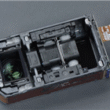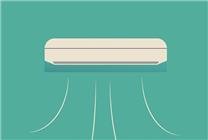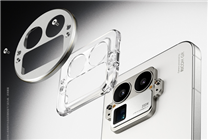Transforming Energy-Saving Habits: The Role of Modern Appliances for Older Adults
Summary:
- Many older adults have outdated energy-saving practices that compromise comfort and appliance longevity.
- Upgrading to energy-efficient home appliances can enhance comfort while genuinely reducing energy costs.
- Active engagement and education about these appliances can help transition older adults to better energy-saving habits.
Understanding Energy-Saving Habits in Older Adults
During holiday visits, you may notice your parents’ fascination with saving electricity, often leading to practices that hinder their comfort and appliance efficiency. From overstuffing refrigerators to operating air conditioners set at 28℃, many of these habits stem from well-intentioned but outdated approaches. By understanding these behaviors, we can offer thoughtful solutions that improve quality of life while genuinely conserving energy.
The Kitchen: Enhancing Comfort and Efficiency
The kitchen is commonly where energy-saving habits have the most detrimental effects. Older appliances can lead to long cooking times and excessive energy consumption. An excellent way to address this is by upgrading to energy-efficient appliances.
Energy-Saving Appliances
-
First-Class Energy-Efficient Refrigerators: These refrigerators feature variable frequency compressors that can adjust cooling power based on internal temperature, reducing energy consumption by over 30%. This design also allows for partitioned storage, which minimizes odors and the frequency of door opening.
-
IH Electromagnetic Rice Cookers: Unlike traditional rice cookers that require soaking rice and consume substantial power to maintain temperature, these cookers heat evenly through electromagnetic induction. They can prepare rice in just 20 minutes, saving both time and energy.
- Energy-Efficient Dishwashers: Many older individuals think dishwashers are costly. However, modern dishwashers use only 8-10 liters of water and consume about 0.5 degrees of electricity per wash—offering significant water and time savings.
Living Comfortably: The Right Appliances for Seniors
Older adults often sacrifice comfort for energy savings, leading them to set air conditioners at uncomfortable temperatures or avoid heating altogether. Introducing energy-efficient living appliances can change this.
Essential Living Appliances
-
Variable Frequency Air Conditioners: These systems adjust their cooling or heating capacity according to room temperature, consuming approximately 40% less energy than traditional units. Their silent mode ensures minimal disturbance, promoting a restful environment.
-
Instant-Heating Electric Water Heaters: Efficient and user-friendly, these devices provide hot water on demand without the preheating delays associated with traditional models. They can produce hot water within seconds, drastically reducing energy waste.
- Smart LED Ceiling Lights: Offering adjustable brightness, these lights can illuminate a room while using a fraction of the energy of traditional incandescent bulbs. Equipped with motion sensors, they automatically turn on and off, preventing unnecessary waste.
Cleaning Made Easy: Energy-Efficient Solutions
Many older adults still rely on labor-intensive cleaning processes, leading to increased physical stress and energy use. Upgrading to efficient cleaning appliances can streamline household chores.
Cleaning Innovations
-
Wireless Handheld Vacuum Cleaners: Lightweight and easy to operate, these vacuums provide powerful suction while being energy-efficient. They can clean homes thoroughly in a fraction of the time it would take to sweep.
- Ultrathin Drum Washing Machines: Compact and energy-efficient, these machines can handle small loads without requiring users to wait to "make up the quantity." They consume significantly less water and electricity compared to traditional models.
Communicating the Change: Redefining Energy Savings
Shifting older adults’ energy-saving habits requires an understanding approach. Demonstrating how modern appliances work can foster confidence and acceptance.
Best Practices for Engagement
-
Hands-On Demonstrations: Show your parents how to set the air conditioner to a comfortable 26℃ or operate the dishwasher. Highlight the cost-effectiveness of these appliances compared to their traditional practices.
- Interactive Learning: Engage in discussions about how these appliances genuinely save energy without sacrificing comfort. Use tangible metrics, such as water and electricity bills, to illustrate the benefits.
Conclusion: A Path to Comfort and Energy Efficiency
Upgrading home appliances is a meaningful way to enrich the lives of older adults, transitioning them from outdated practices to modern solutions that prioritize both comfort and energy savings. This National Day holiday, consider how technology can bridge the gap between filial piety and the well-being of your parents.
By cultivating an environment of understanding and engagement, we can help older adults embrace a new standard of living that prioritizes convenience and efficiency.










